Discover these 20 fitness foods that contribute to muscle growth, keep you satiated during weight loss efforts, and provide essential vitamins for your body.
“It’s a fact: You truly become what you consume. Consequently, there are days when you find yourself feeling closer to a cream-filled Twinkie rather than the lean cut of beef you strive to embody.”
However, you’re likely aware of this reality. That’s why, like everyone else, you’re probably endeavoring to improve your habits and adopt a healthier eating routine. Nevertheless, the truth is that it’s not sufficient on its own. If you indulge excessively in apples, bananas, and salads primarily composed of iceberg lettuce, you may be following a healthy diet, but it lacks the element of smart eating.
To achieve the desired physique, you envision—impressive arms, sculpted abs, a sharp mind, and an unwavering libido—you must ensure that every morsel of food you consume holds significance. This entails constructing your diet around the most potent, nutrient-dense, disease-fighting, and muscle-building foods available.
However, where should one commence this journey? Which foods are truly the epitome of fitness? To uncover the answers, we embarked on a mission to challenge some of the country’s leading nutrition experts.
Initially, we conducted a survey involving 40 highly regarded health professionals across the nation, including registered dietitians, college nutrition professors, and esteemed authors. Our query to each expert was straightforward: Which 20 foods are paramount for men to incorporate into their diets to optimize fitness? As the responses poured in, we diligently evaluated and ranked the recommendations provided by our panel of experts.
Turkey Breast
72 calories per 3-oz serving
Eat 3 servings per week
When you purchase turkey breast without the skin, you acquire a generous seven grams of protein per ounce, ideal for fostering muscle growth. Additionally, turkey breast is rich in vitamins B, zinc (recognized for enhancing sperm production), and selenium, which has anticancer properties. Elizabeth Ward, M.S., R.D., a nutritionist based in Reading, Massachusetts, affirms, “It also provides a multitude of amino acids while containing minimal to no saturated fats.” Another advantage of turkey breast is its remarkable versatility as meat, allowing you to savor diverse preparations throughout the week without repetition.
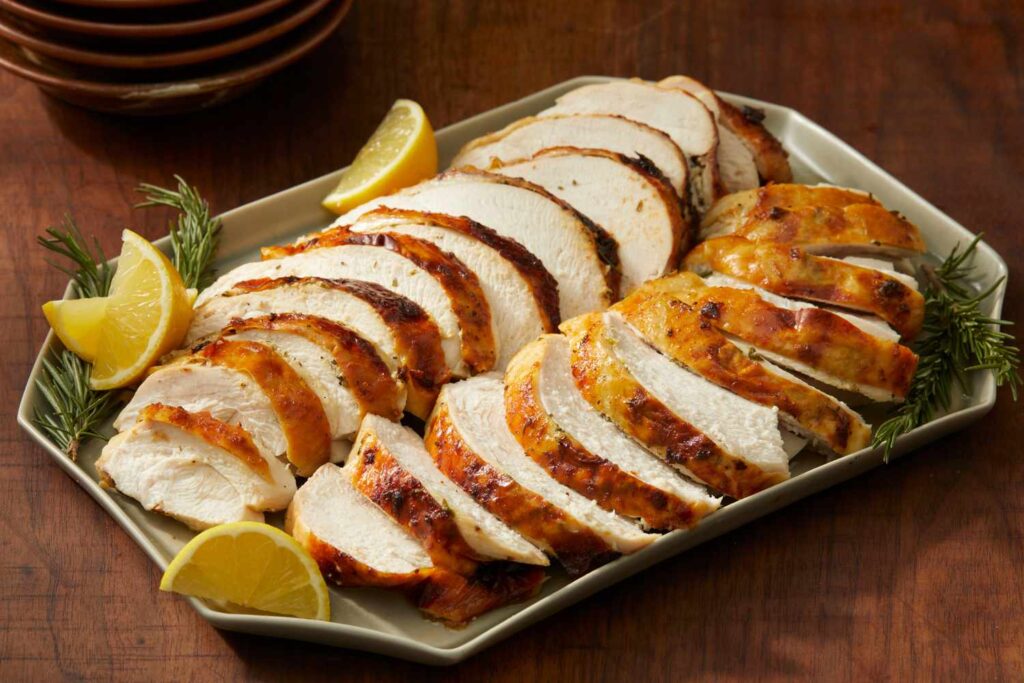
Olive Oil
119 calories per tbsp
Eat 2 tbsp per day
Olive Oil stands as a rich source of beneficial monounsaturated fat, making it an excellent choice for maintaining heart health. Scientific studies indicate that replacing two tablespoons of saturated fat, commonly found in butter and lard, with monounsaturated fat can potentially lower the risk of heart disease. However, the advantages of olive oil extend beyond cardiovascular well-being. A study published in the journal Nature reveals its remarkable anti-inflammatory properties, which can effectively alleviate pain and reduce swelling, akin to the effects of ibuprofen. Aside from using olive oil for cooking and as a salad dressing, you can further incorporate it into your daily diet by blending one or two tablespoons into your protein shake.
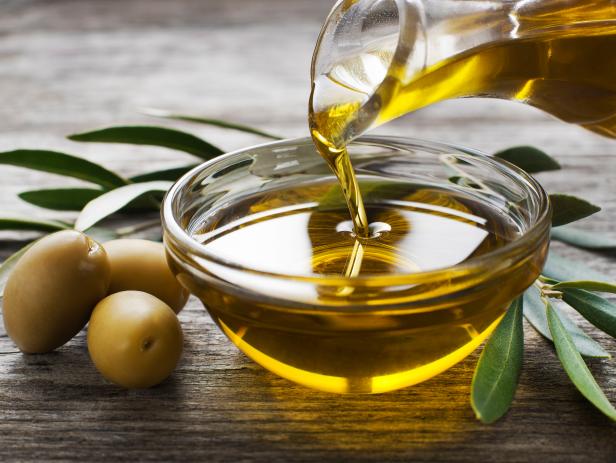
Quinoa
318 calories per half cup
Eat 2-3 servings per week
You may not yet be acquainted with this intriguing whole grain cultivated in the Andes mountains, but it’s time to get to know it. With its gentle and subtle taste, it becomes a perfect choice for individuals who aren’t fond of other whole grains. What’s more, it surpasses all other grains in terms of protein content and provides a substantial supply of heart-healthy unsaturated fats. “Quinoa is an excellent source of fiber and B vitamins as well,” affirms Christopher Mohr, Ph.D., R.D., a nutrition professor at the University of Louisville.
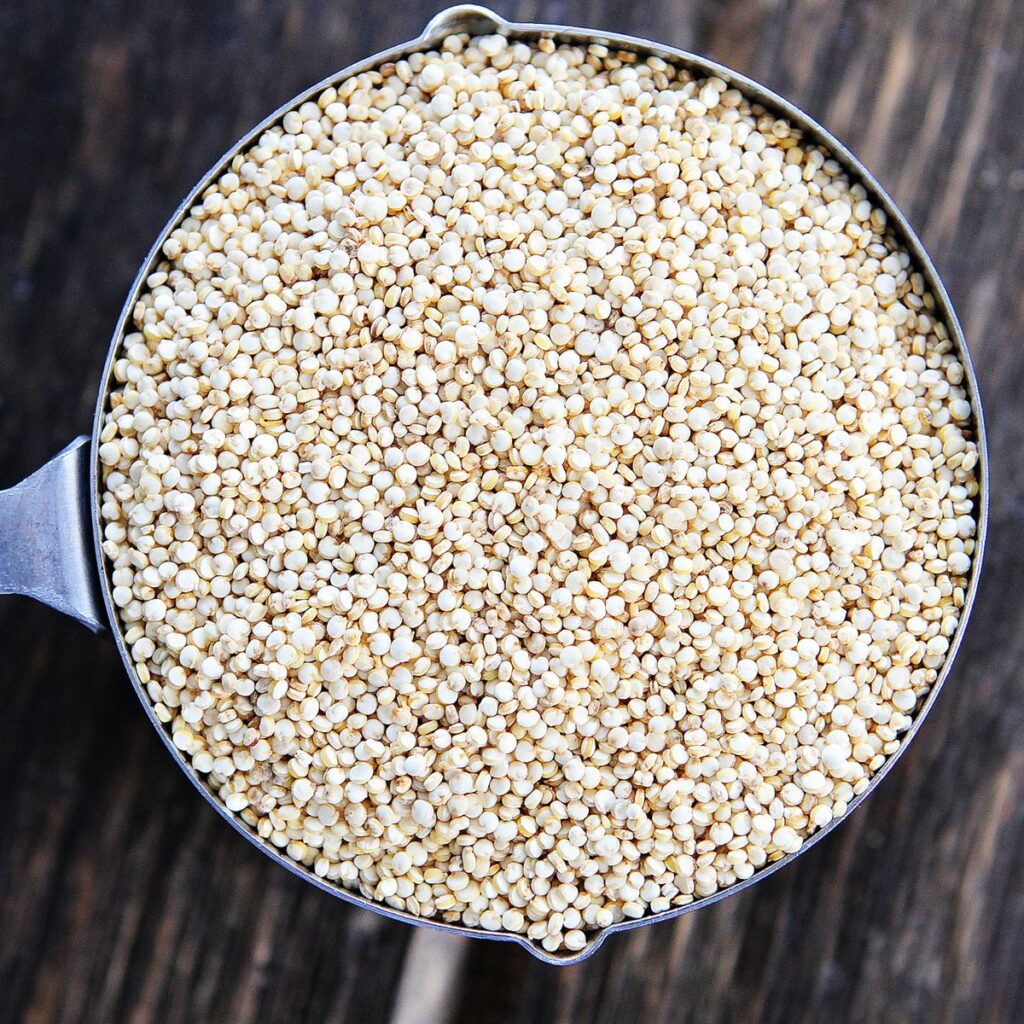
Black Beans
Despite their small size, beans possess the remarkable ability to provide lasting energy and satiety compared to most other foods. This can be attributed to two factors: their remarkable fiber content, which expands in the stomach and induces a feeling of fullness, and their complex form of carbohydrates that takes the body a considerable amount of time to convert into energy. Furthermore, beans offer a substantial amount of protein, akin to meat, but without any saturated fats. “Beans, in all their varieties, consistently rank high on the lists of nutritionists,” remarks Jennifer R. Bathgate, R.D., a nutritionist based in Chicago. So why did our experts specifically choose black beans? It’s simple: ounce for ounce, they contain more fiber per serving than any other legume in the family.
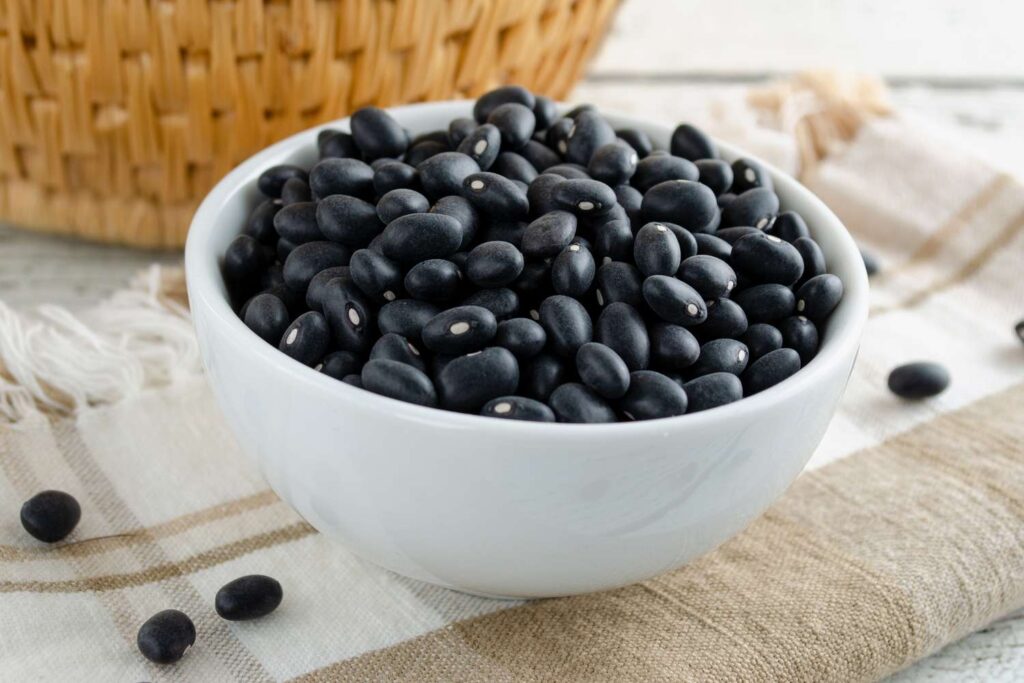
Green Tea
2 calories per cup
Drink 1-3 cups per day
Green tea has demonstrated its ability to combat numerous significant health issues, ranging from cancer prevention to weight loss and even potentially slowing the progression of Alzheimer’s disease. “Whether consumed hot or cold, there are few beverages that can rival its benefits,” claims Mohr. If traditional tea bags aren’t your preference, consider opting for a liquid extract. Simply add a few drops to water, and you’ll have an instant cup of tea ready to enjoy.

Eggs
74 calories per large egg
Eat 3-7 eggs per week
“According to Ward, having an egg daily is absolutely beneficial.” Here’s the reasoning behind it: Each egg encapsulates a substantial 4 grams of muscle-nurturing amino acids, making it an exceptional source. Additionally, eggs are rich in choline, a vitamin known for its potential to enhance memory. “When it comes to supplying the essential nutrients for muscle development, eggs are considered the gold standard,” affirms Ward.
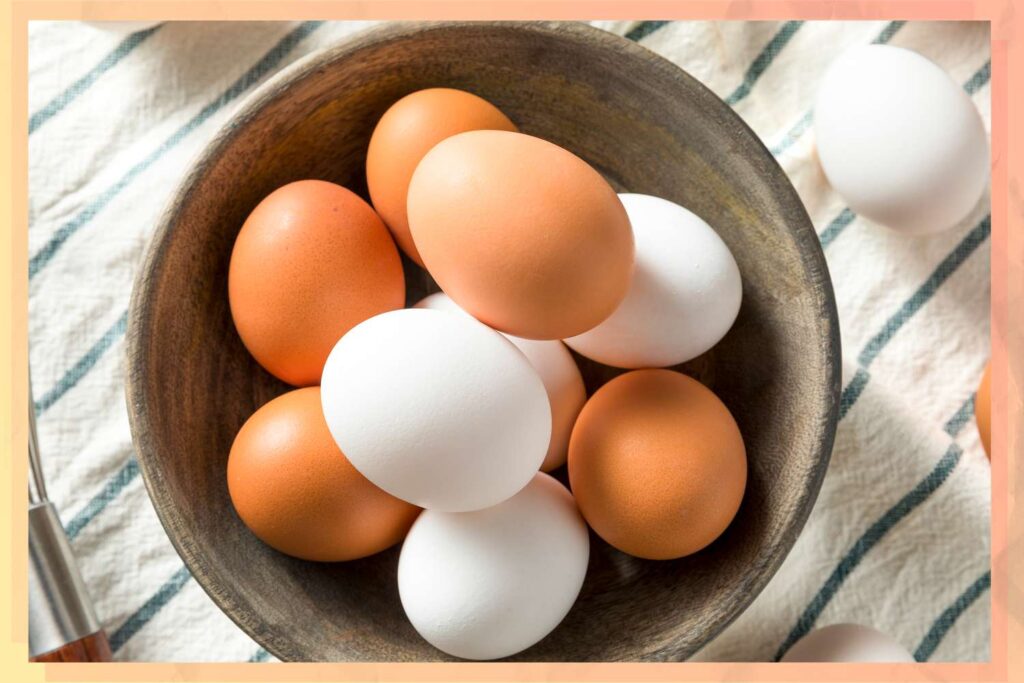
Milk
118 calories per cup
Get 3 servings of dairy per day
You’re likely aware that milk contributes to the well-being of your body, but what you may not know is that depriving yourself of dairy can lead to some displeased reactions within your body. Insufficient dairy intake triggers the release of hormones that prompt your cells to retain calcium, as well as fat, as explained by Michael Zemel, Ph.D., the director of The Nutrition Institute at the University of Tennessee. While calories still play a role, it’s advisable to consume milk in moderate quantities rather than excessive amounts. However, ensure that you incorporate it into your diet. Zemel highlights that dairy contains components that activate your body’s fat-burning mechanism and impede fat storage. While alternative forms of supplementation are beneficial in various cases, this particular scenario demonstrates that authentic dairy yields the most favorable outcomes.
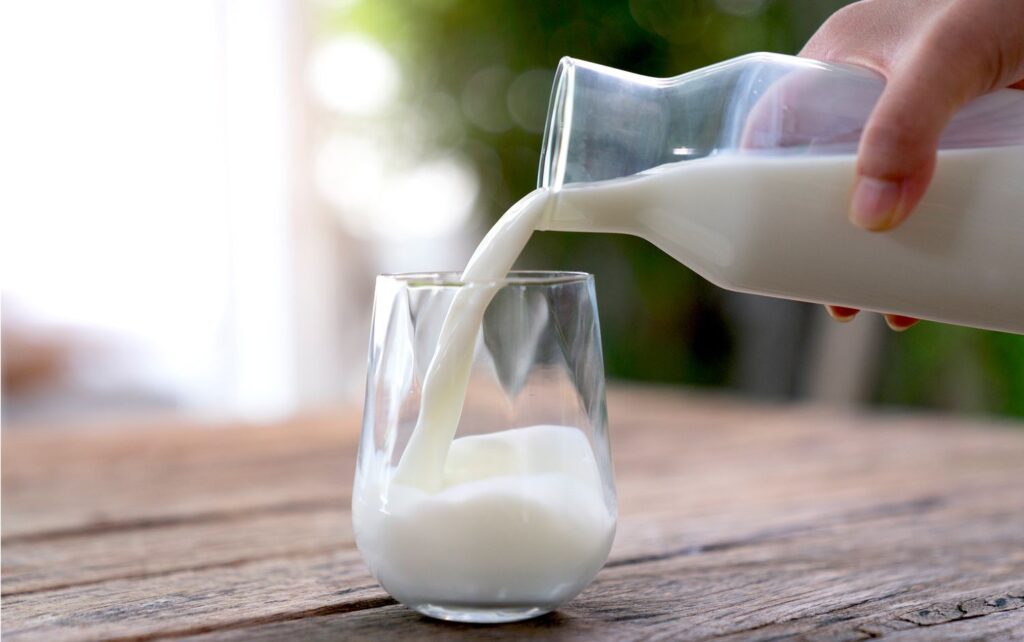
Water
0 calories
Drink Eight 8-oz glasses per day
You’re well aware of the importance of increasing your water intake, and there are compelling reasons behind it. Water plays a vital role in detoxifying your system, maintaining body temperature, providing joint insulation, preventing kidney stones, and delivering a wealth of essential minerals to the body, according to Marietta Amatangelo, R.D., from Germantown, Maryland. Amatangelo emphasizes that without water, the significance of all other superfoods would diminish.
While water serves a multitude of purposes, its efficacy in weight loss endeavors is particularly noteworthy. Consuming a glass or two of water approximately 30 minutes before a meal, for instance, can effectively curb your appetite and mitigate hunger pangs.
Finding it tiresome to consume an ample amount of water daily? Consider preparing a refreshing half-gallon of sugar-free lemonade that you can enjoy throughout the day, or opt for a pack of calorie-free flavorings to enhance the taste of your water bottle at work.

Sweet Potatoes
100 calories permed. potato
Eat 1 per week
A mere four-ounce sweet potato contains an abundance of health benefits. It provides over 100% of the recommended daily intake of beta carotene, a substantial amount of iron, and a generous supply of vitamins C and E. These nutrients synergistically collaborate to shield the body against various forms of cellular damage, particularly in athletes exposed to challenging environments like high altitudes, extreme temperatures, or pollution. Additionally, sweet potatoes rank among the top foods for aiding muscle recovery following intense workouts, as highlighted by Kim Mueller, R.D., a sports nutritionist based in California.
Sweet potatoes offer a plethora of culinary possibilities beyond the traditional methods of baking, boiling, or adding marshmallows as toppings. Experiment by incorporating cooked and diced sweet potatoes into chili or your preferred potato salad recipe. You can also grate them and mix them into hamburgers or meatloaf for added flavor and nutrition. Another option is to transform them into homemade oven-baked fries, allowing you to enjoy their deliciousness in a different form. The versatility of sweet potatoes opens up a world of creative and delightful dishes to explore.

Soy
300 calories per cup
Eat 2 servings per week
Even tough Navy SEALs incorporate soybeans into their diets, and so can you. Wendy Jo Peterson, a dietitian from Virginia Beach who is married to a SEAL, serves edamame to her husband and his Navy colleagues. Initially, they may have reservations about it, but once they try it, they realize it’s simply soybeans. Peterson refers to soy as a “superb food” due to its remarkable attributes. It provides the protein found in meat, the fiber of whole grains, and the antioxidants, vitamins, and minerals akin to the finest vegetables and fruits. If you’re not fond of tofu or soy milk, there are convenient ways to increase your soy consumption. Soy nuts, as well as the soy protein incorporated in certain protein shakes and bars, not only boast a delightful taste but are also highly beneficial for your well-being.
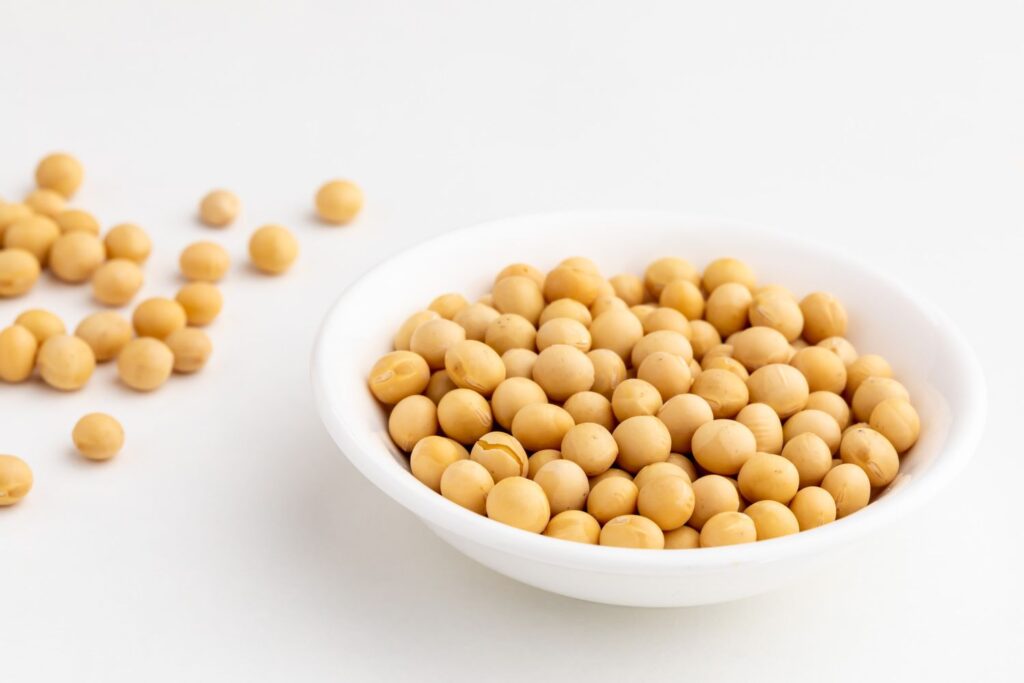
Beef
163 calories per 3-oz serving
Eat 3-4 servings per week
Not only is beef rich in muscle-building amino acids, but it also serves as a source of essential nutrients like iron and zinc, which contribute to circulatory health. The nutritional density of beef is impressive, with just a three-ounce serving providing over 10% of the recommended daily intake for various nutrients, including protein, B6 and B12 vitamins, selenium, phosphorus, niacin, and riboflavin. Concerned about the fat content? Rest assured that according to USDA data, beef today is up to 20% leaner compared to a decade ago. In fact, 19 different cuts of beef meet the government’s guidelines for being classified as lean meat. To ensure you purchase lean, tender, and flavorsome cuts of beef, look for names that include “round” or “top,” such as eye round roast, top round, or top sirloin steak.
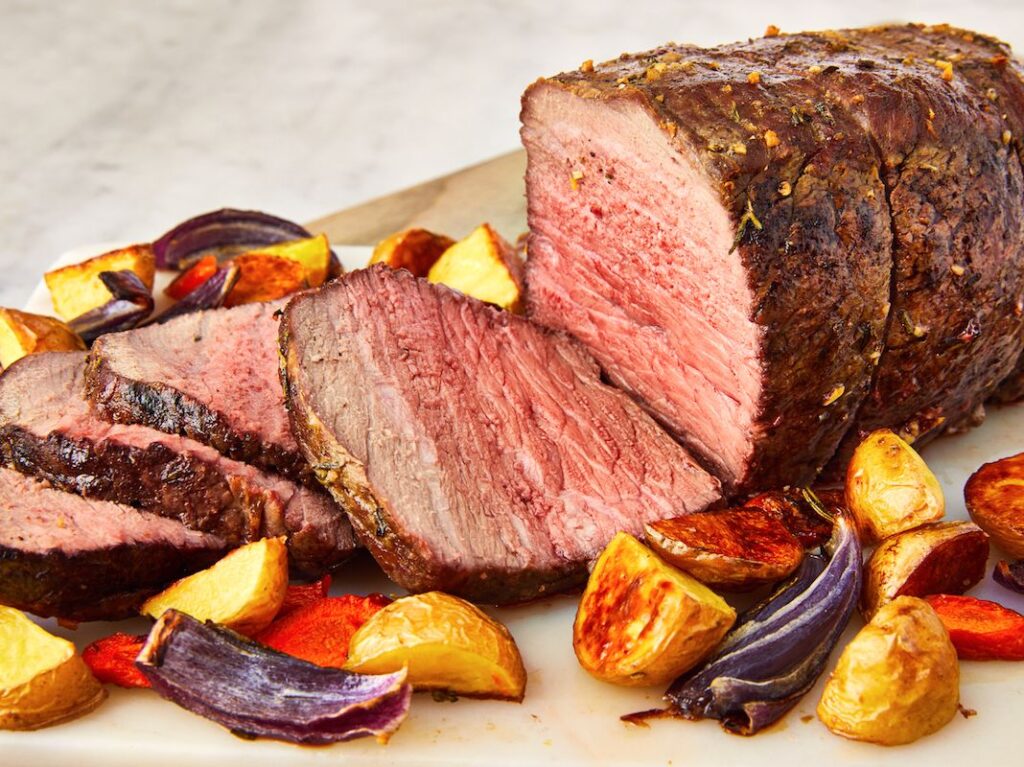
Whole-Wheat Bread
140 calories per 2 slices
Eat 6 slices per week
White flour not only lacks fiber and protein, but it also undergoes rapid digestion in the body, leading to a quick surge of energy that inevitably crashes soon after. These fluctuations in insulin production, caused by consuming white flour, can have detrimental effects on the body over time, including cell damage and excessive fat storage. Considering these factors, why would one choose to consume white bread?
“Even if you’re following a low-carb approach, complex whole grains still have a valuable role in your diet,” advises Mohr. “They offer prolonged satiety, ensuring you feel full for longer periods, and provide a sustained and steady release of energy.” However, exercise caution when purchasing products that claim to be whole grain. Some may appear brown due to added molasses for coloring purposes. Instead of relying on color alone, scrutinize the ingredient list. Genuine whole-grain items are those that feature 100% whole wheat or whole grain listed as the primary ingredient on the packaging.
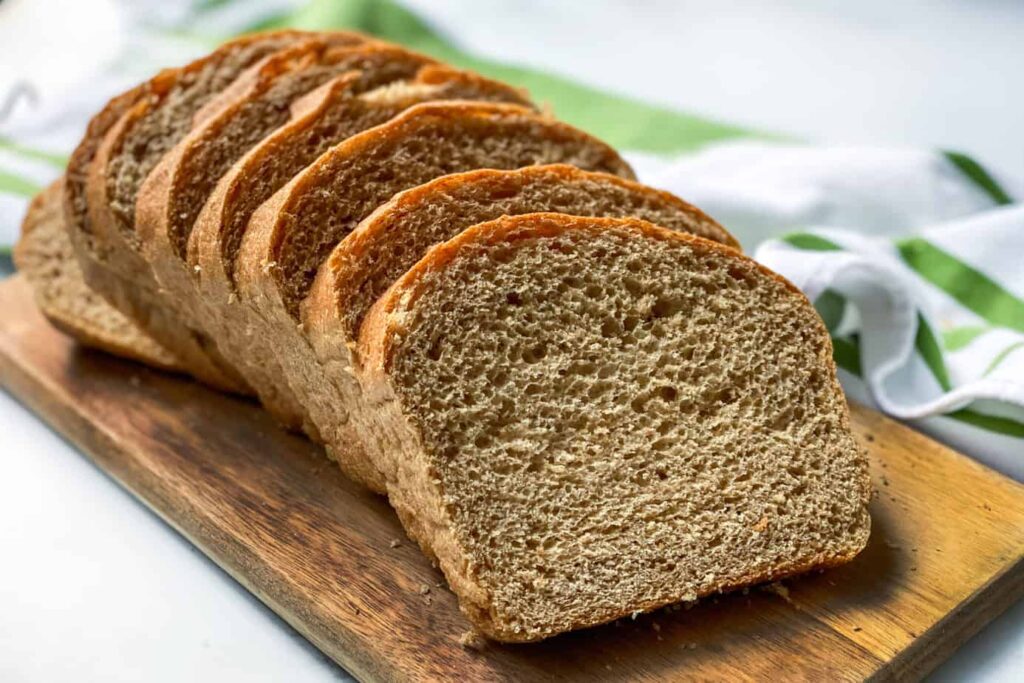
Almonds
82 calories per 1/2-oz serving
Eat 3 servings per week
Almonds, rich in protein, fiber, and vitamin E, offer numerous benefits to your heart, digestive system, and skin. Despite their high content of healthy unsaturated fats, some individuals shy away from them due to their calorie density. However, this is a misconception. Gary Fraser, Ph.D., a professor of medicine at Loma Linda University in California, conducted a study involving individuals who incorporated two ounces of almonds into their regular diet. Surprisingly, the participants experienced no significant change in weight. Dr. Fraser suggests that since nuts are a dense food, a significant portion of their calories may not be absorbed by the body. Hence, enjoying almonds can be a smart choice for your overall well-being.

Yogurt
154 calories per cup
Get 3 servings of dairy per day
Yogurt offers a range of benefits similar to those of milk, and it also contains active cultures that promote the growth of beneficial bacteria along your intestinal walls, according to Mueller. This has significant implications for your health as it helps bolster your immune system and reduces the likelihood of falling ill. Research indicates that individuals who frequently consume yogurt are less prone to catching colds compared to those who rarely include it in their diet.
Besides, yogurt, like milk, provides a calcium boost that not only enhances fat-burning capabilities but also aids in creating a feeling of satiety, making it an excellent food choice for weight loss. Mueller advises opting for yogurt that is less than a week old to maximize the benefits of its active cultures. (You can determine freshness based on the product’s expiration date, with later dates indicating newer batches.) However, exercise caution as most yogurts on the market are loaded with added sugar and high-fructose corn syrup.

Spinach
7 calories per cup
Eat 2-3 servings per week
What’s the common ground between prim-and-proper dietitians and boisterous cartoon sailors? Their shared adoration for spinach! And it’s not without reason. A single serving of these vibrant leafy greens is packed with fiber, calcium, and nearly your entire daily requirement of beta carotene—a crucial nutrient that supports immune system function and maintains good vision (though it hasn’t been proven to enhance wrist flexing abilities, as far as we know).
If you find plain spinach unappealing, Katherine Tallmadge, R.D., author of Diet Simple, recommends incorporating it into burritos, pasta dishes, or even canned soup for a flavorful twist.

Broccoli
31 calories per cup
Eat 2-3 half-cup servings per week
This nutrient-packed green should be a top priority on your vegetable list. It boasts a rich supply of iron, calcium, fiber, and vitamin C, making it beneficial for your circulatory system, bones, and immune system. “Among vegetables, this is the one I make the greatest effort to encourage more men to consume,” says Niki Kubiak, R.D., a nutritionist in private practice based in Omaha, Neb. If you’re not a fan of broccoli, try incorporating it in creative ways: add it to stir-fries, sprinkle it on pizza, or use raw chunks as a delicious vehicle for your favorite dip.
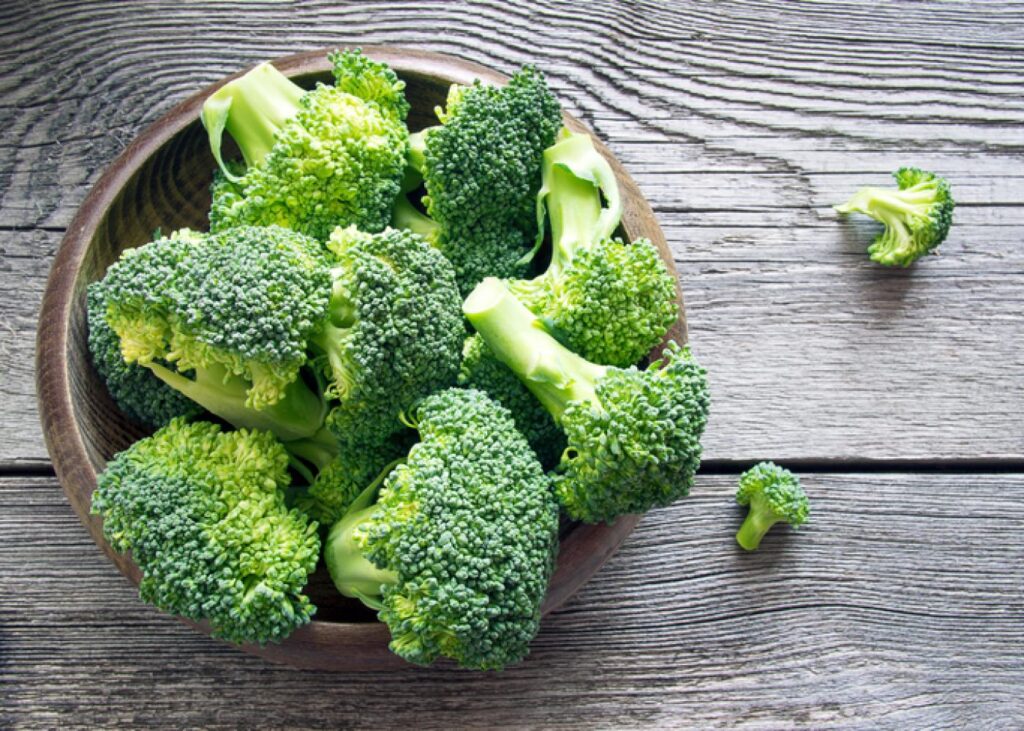
Tomatoes
83 calories per cup
Eat 4 servings per week
Indeed, it is a fact that tomatoes were once referred to as “love apples” and associated with being a potent aphrodisiac. However, that historical belief is not the reason we have chosen tomatoes as the top food for sexual health. Instead, tomatoes have earned their position on our list, and their notable ranking overall, due to the presence of a specific nutrient: lycopene.
The vibrant red color of tomatoes is attributed to a potent antioxidant called lycopene, which holds remarkable health benefits, especially in combating various diseases. Of particular significance for men is its potential to reduce the risk of prostate cancer. Extensive research has consistently demonstrated that individuals who incorporate abundant tomatoes and tomato-based products into their diet are less prone to prostate issues compared to those who consume them infrequently. Additionally, men on busy schedules will be pleased to learn that tomatoes possess a rare attribute: their nutritional value actually increases when they are cooked rather than consumed raw.

Oatmeal
148 calories per half cup
Eat 3-4 servings per week
When it comes to starting your day with a nourishing breakfast, few options compare to a comforting bowl of oatmeal. Not only does it provide a substantial boost to your energy levels, but it also ensures a sustained supply of fuel throughout the morning. Additionally, oatmeal is packed with zinc, a valuable nutrient known for its stress-fighting properties and immune system support.
If those reasons alone haven’t convinced you to prepare a steaming bowl of oatmeal, consider the additional benefits it offers, such as aiding in weight loss and reducing the risk of heart disease. Oatmeal is abundant in soluble fiber, which plays a crucial role in safeguarding your heart and arteries. By effectively capturing and eliminating cholesterol, it has the potential to lower cholesterol levels by a substantial margin, sometimes reaching a decrease of up to 30 points or more, according to Kubiak. So, incorporating oatmeal into your breakfast routine can be a wise choice for both your waistline and cardiovascular health.
While the most convenient option may not necessarily be the best, especially when it comes to oatmeal, it’s worth considering the alternatives. Those pre-packaged, flavored oatmeal packets that line the grocery store shelves tend to be loaded with added sugar and consequently excess calories. To make a healthier choice, opt for a larger container of instant oatmeal and customize it with your preferred fruits and calorie-free sweeteners, if desired. This way, you have more control over the ingredients and can create a delicious and nutritious bowl of oatmeal tailored to your taste.
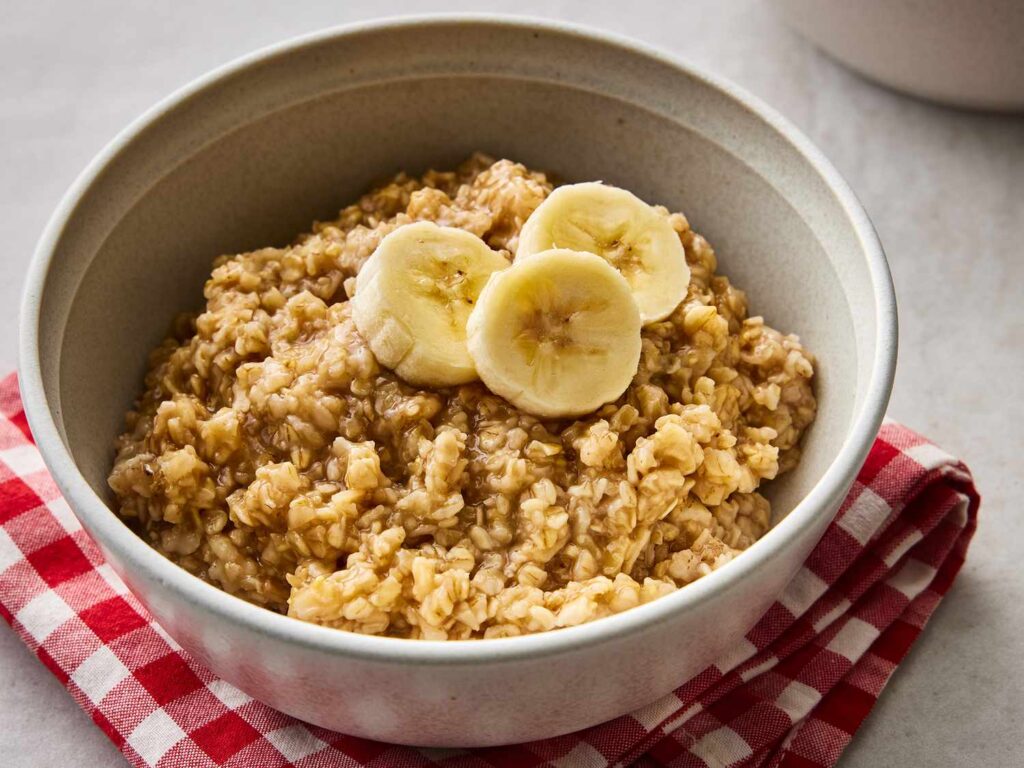
Blueberries
41 calories per half cup
Eat 1-2 cups per week
Among the various fruits available, blueberries stand out as an exceptional choice. Whether consumed fresh, added to cereal, incorporated into fruit salads, or blended into smoothies, blueberries offer an impressive array of fiber, vitamins, and minerals per ounce, surpassing other fruits found in the produce section. Notably, blueberries are rich in antioxidants that combat harmful free radicals. As you age, free radicals accumulate in your body, causing cell damage, increasing the risk of diseases, and accelerating signs of premature aging. Thankfully, blueberries possess the remarkable ability to neutralize these harmful agents and protect your cells.
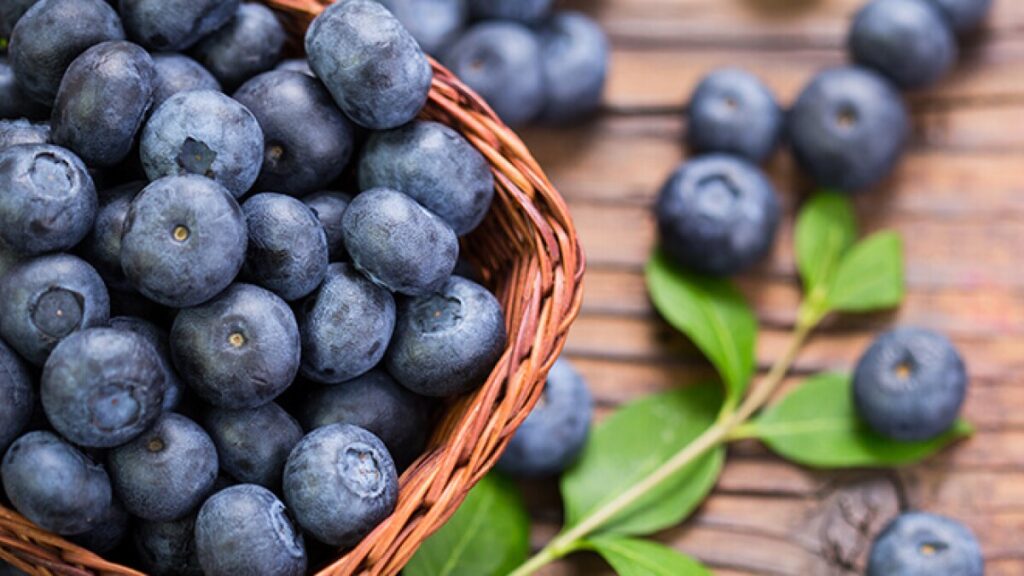
Salmon
121 calories per 3-oz serving
Eat 3-4 servings per week
Salmon holds a prominent position on our list for several compelling reasons, with its abundance of omega-3 fatty acids being the primary one. These essential fats are believed to help combat age-related memory decline and promote cardiovascular well-being by regulating heart rhythms and maintaining the flexibility and openness of arteries and veins, preventing blockages. While saturated fats contribute to obesity, the polyunsaturated fatty acids present in fish have been shown to counteract and prevent obesity, as indicated by a study published in Clinical Science.
That’s merely scratching the surface. Salmon serves as an exceptional protein source as well. With 20 grams of protein in a three-ounce cooked serving, it becomes an ideal choice for both muscle building and fat reduction. Protein not only boosts your metabolism three to four times more effectively than carbohydrates or fats but also excels at keeping you satiated, resulting in lower calorie intake and increased calorie burn. Ultimately, this is what embodies the essence of a nutritious and fitness-oriented food choice.
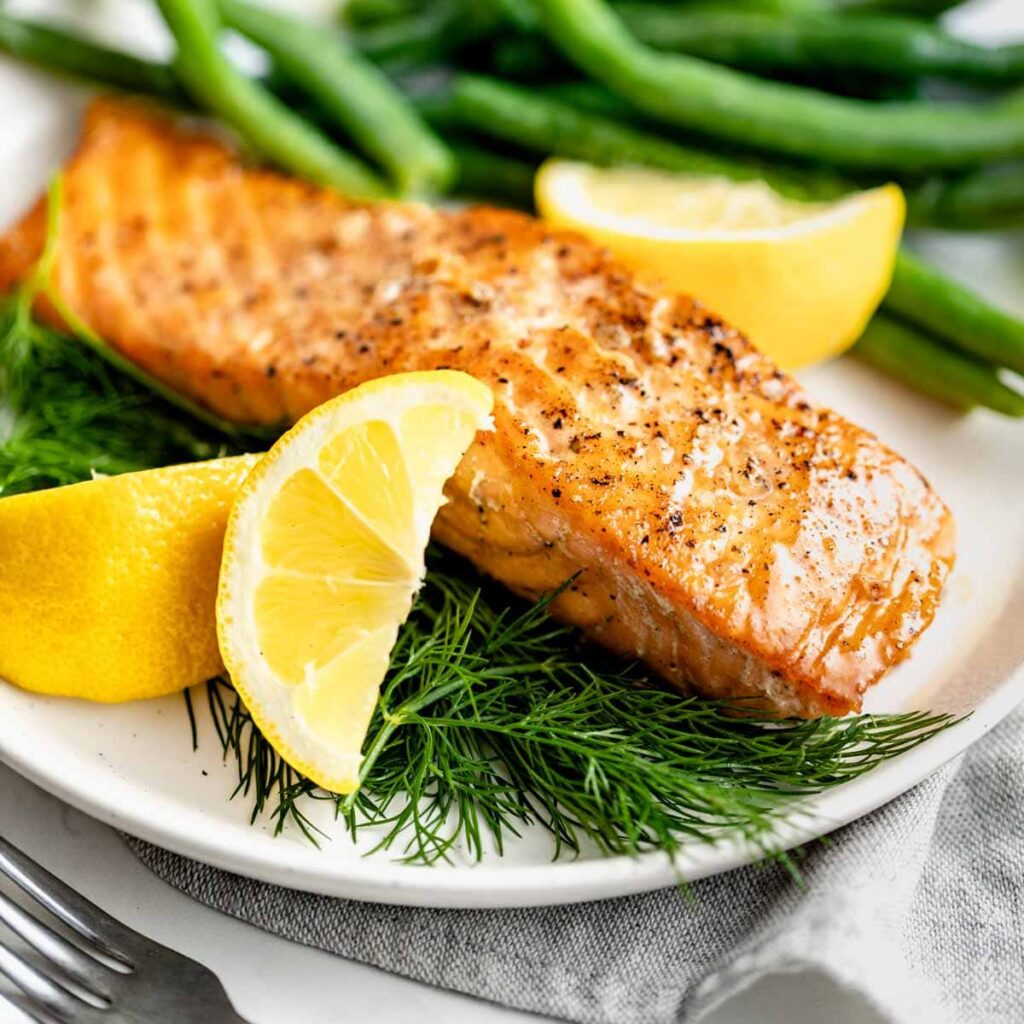
Conclusion
In conclusion, incorporating the top 20 fitness foods into your diet can significantly support your weight loss, dieting, and muscle-building goals. These foods are not only rich in essential nutrients, but they also offer various health benefits that contribute to overall well-being. From the antioxidant-packed blueberries to the protein-packed salmon, each food on the list plays a unique role in promoting optimal fitness and vitality.
Frequently Ask Questions:
Can I include all the top 20 fitness foods in my diet at once?
It is not necessary to include all the top 20 fitness foods in your diet at once. It is important to have a varied and balanced diet that includes a mix of these foods over time. You can choose the ones that align with your personal preferences and dietary needs and incorporate them gradually into your meals.
Are these fitness foods suitable for people with dietary restrictions or allergies?
Many of the top 20 fitness foods are versatile and can be adapted to different dietary restrictions or allergies. However, it is important to consider individual needs and consult with a healthcare professional or registered dietitian if you have specific concerns or conditions. They can provide personalized guidance and suggest suitable alternatives if needed.
Can these fitness foods replace exercise for weight loss or muscle building?
While these fitness foods are beneficial for weight loss, dieting, and muscle building, they cannot replace the importance of regular exercise. Exercise plays a crucial role in burning calories, building muscle, and improving overall fitness. To achieve optimal results, it is recommended to combine a balanced diet with a consistent exercise routine.
How can I incorporate these fitness foods into my meals and snacks?
There are numerous ways to incorporate these fitness foods into your meals and snacks. You can add berries to your breakfast cereal, include leafy greens in salads or stir-fries, use salmon as a protein source in your main dishes, or snack on almonds or yogurt between meals. Get creative and experiment with different recipes and combinations to make your meals nutritious and enjoyable.
Are there any specific portion sizes or serving recommendations for these fitness foods?
Portion sizes may vary depending on individual needs and dietary goals. It is generally recommended to follow portion guidelines provided by health authorities or consult with a registered dietitian for personalized advice. They can help determine appropriate serving sizes based on your specific requirements and guide you on incorporating these fitness foods into your diet effectively.







